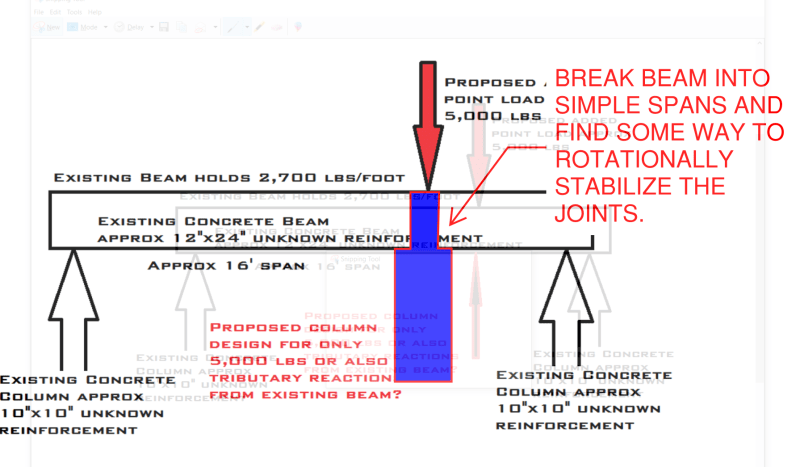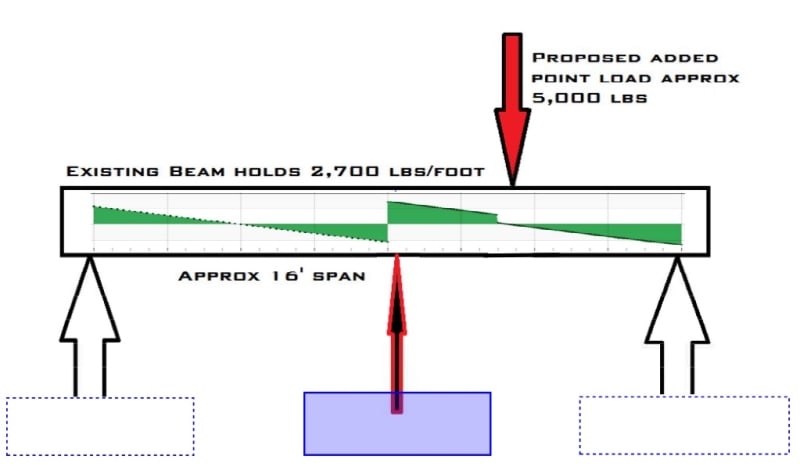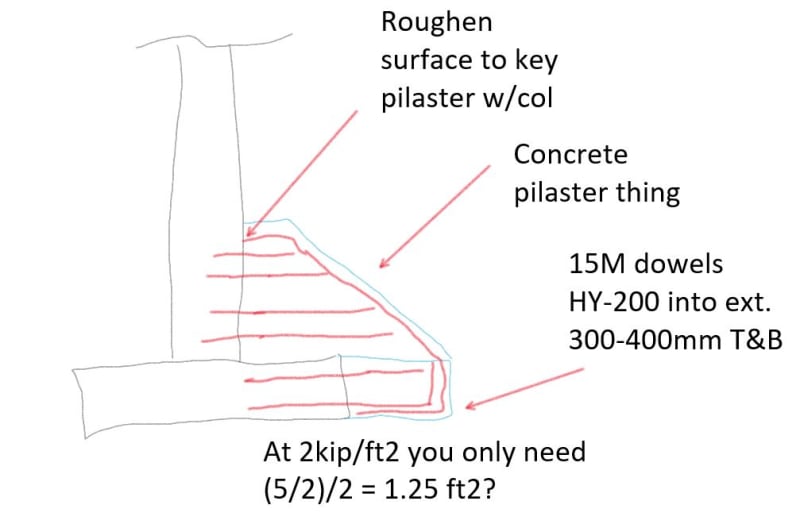Hello!
This is the situation:
An existing house with a concrete beam approx 12"x24" spanning 16 feet.
The existing beam holds up approx 2,700 lbs/foot.
We want to add a 5,000 lb concentrated load above the beam.
We want to add a column directly under the 5,000 lb load.
Does this column and footing have to be designed for 5,000 lbs only or 5,000 lbs plus 8 feet of trib width * 2,700 lbs/foot = 26,600 lbs?
Conservatively I wanted to design the column and footing for 26,600 lbs, and the contractor is suggesting it be designed for only the added load of 5,000 lbs.
What do you think? See the attached sketch for clarity.
--Luke
Texas PE
Structural and Civil Engineering
www.framestudio.com
This is the situation:
An existing house with a concrete beam approx 12"x24" spanning 16 feet.
The existing beam holds up approx 2,700 lbs/foot.
We want to add a 5,000 lb concentrated load above the beam.
We want to add a column directly under the 5,000 lb load.
Does this column and footing have to be designed for 5,000 lbs only or 5,000 lbs plus 8 feet of trib width * 2,700 lbs/foot = 26,600 lbs?
Conservatively I wanted to design the column and footing for 26,600 lbs, and the contractor is suggesting it be designed for only the added load of 5,000 lbs.
What do you think? See the attached sketch for clarity.
--Luke
Texas PE
Structural and Civil Engineering
www.framestudio.com



